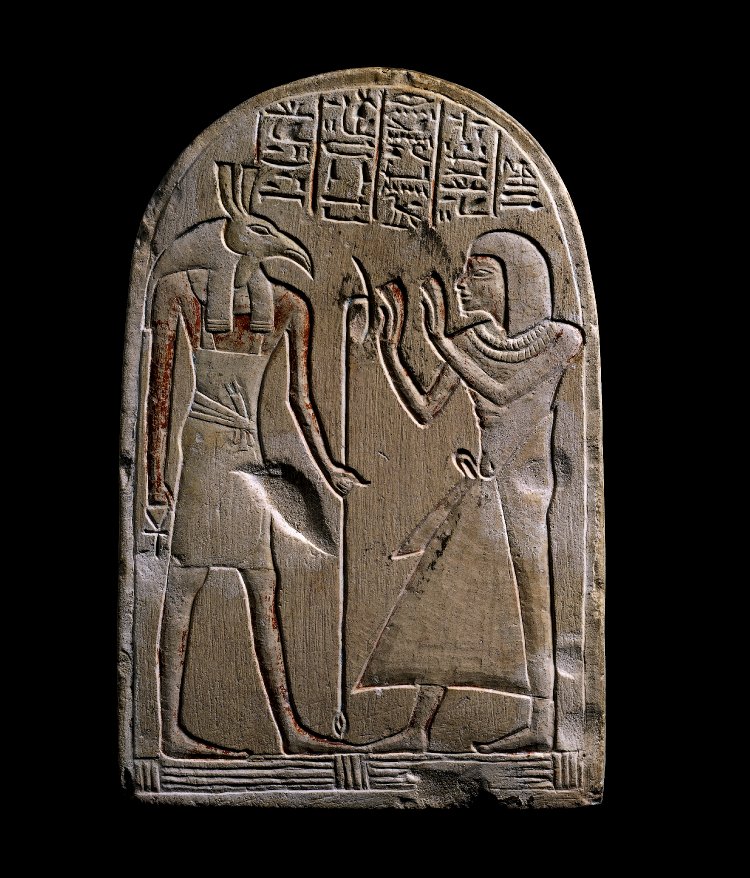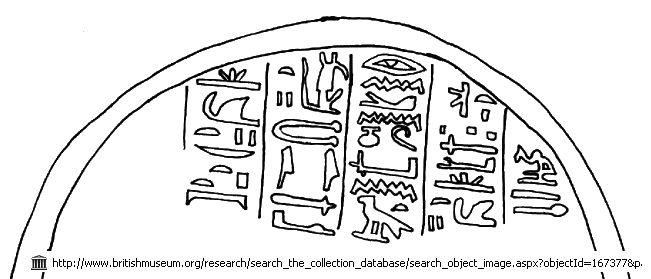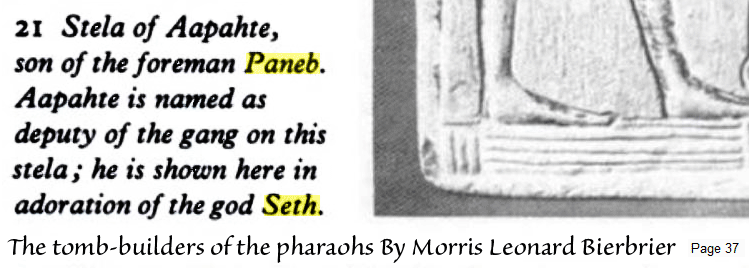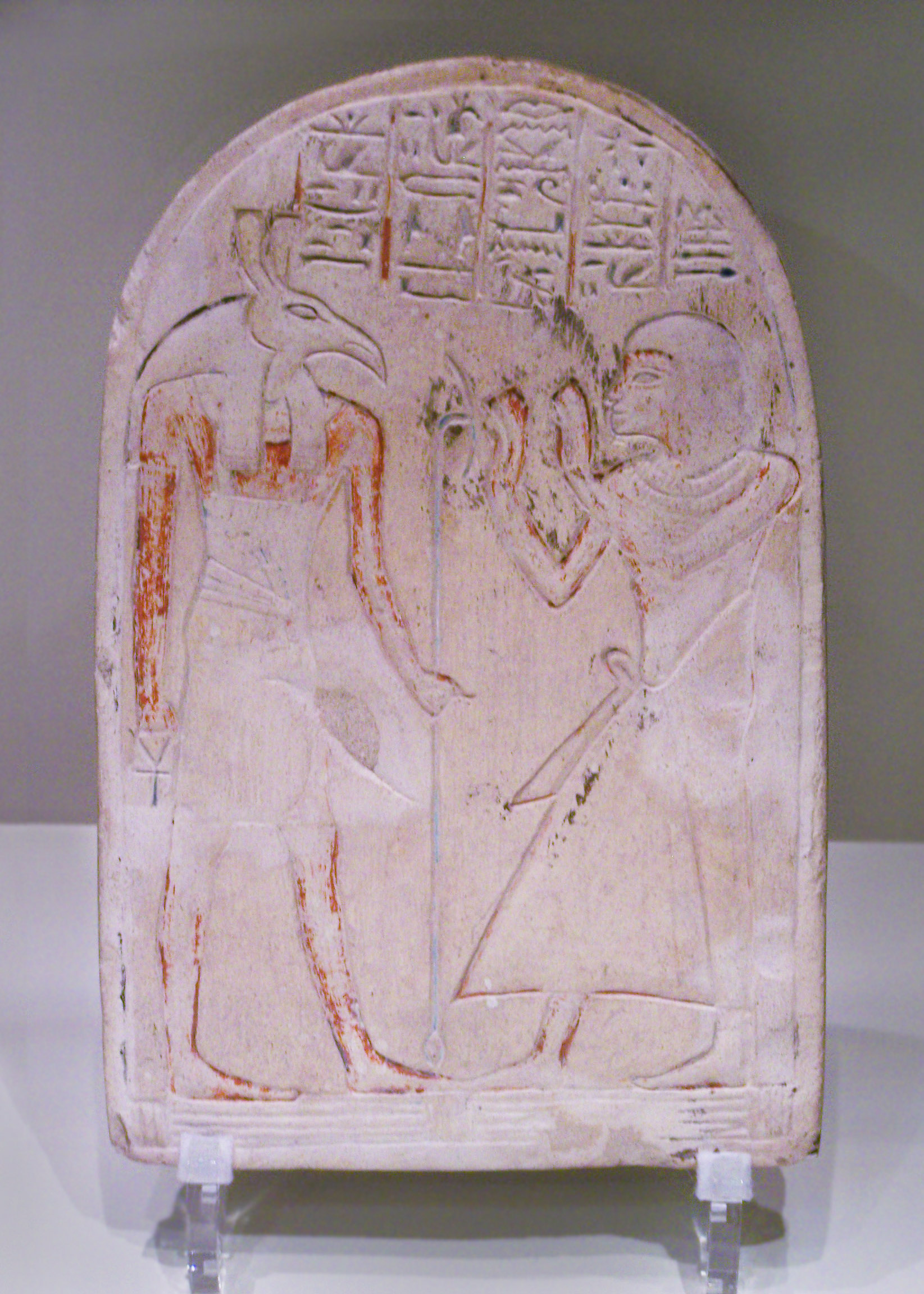
The British Museum, EA 35630
Height: 9.850 cm (max.),Width: 7.720 cm (max.),Thickness: 5.010 cm (max.), Later 19th Dynasty, around 1200 BC

Hieroglyph details... (British Museum drawing)
"The writing of the text is erratic as can be seen in the word idnw and the reversal of the phty-sign in the owner's name."
Even though it's all on the slant, Set's hieroglyph is plainly visible.
|
It's a small stela, not quite four inches high, but it's in good shape. The museum's website explains: "This stela is one of many dedicated to various deities revered by the workmen of Deir el-Medina. Aapehty was the deputy of the gang of workmen who cut and decorated the royal tombs."
 Morris Leonard Bierbrier adds "Stela of Aapahte, son of the foreman Paneb. Aapahte is named as deputy of the gang on this stela; he is shown here in adoration of the god Seth" (from _The Tomb-Builders of the Pharaohs_, page 37)
"Aapehty may have had a connection with the god since his name means 'great of strength' which is one of Seth's epithets. The cult of Seth was particularly strong on the Eastern Delta border of Egypt. The Nineteenth-Dynasty kings with the name Sety, who came from that area, are named after Seth.
|

Aapehty's stela went to Leiden for an exhibit on "Egyptian Magic", where Monique van der Veen photographed it there, and graciously shared the photo!



